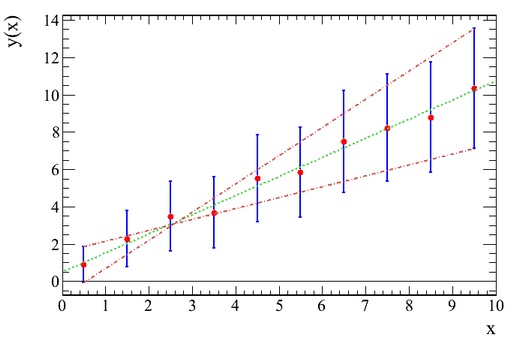Correlation & Cause TOK Postcard
Correlation & causation - a way of knowing
 Guiding question
Guiding question
How could bias in biological research be a problem for knowledge?
Correlation and cause are easily confused by many people and are frequently misused in the press.
A correlation is the measure of how two variables relate to each other. If there is a positive correlation, then as one variable increases, so will the other. Plotting the data on a graph allows a correlation coefficient to be calculated. Using Excel or another graphing software, you can find this coefficient, called R. If R = 1.0 then there is a strong correlation and a change in the variable on the x axis will be related to a positive change in the variable on the y axis. Obviously, an R = -1, the slope would be negative but there is still a correlation. Data with R values decreasing from 1 towards zero show less and less correlation between the variables. If the increase of one variable has no effect on the other, then there is no correlation. This would be seen with the line of best fit having a slope of zero and an R value of zero as well.
Any data can be plotted to find the correlation, but this does not mean that one variable will cause the change in the second variable. Consider arm length and lung capacity or leg length and speed at 100m sprints.
Causation means that the change of one variable will make the other variable change. An example of this would be the increase of temperature on the rate of enzyme activity. As temperature increases, so does the rate of the reaction, up to a point of course!
Reflective questions
What is the effect of bias in considering correlations?
What is the effect of bias when looking for causes?
Is it possible to have research without any bias?
How can a causal relationship be established in science?
Examples from Biology
The correlation of cardiac heart disease with obesity in people is quite high, but obesity in itself may not cause cardiac heart disease nor does cardiac heart disease cause obesity.
The work of many scientists, including Louis Pasteur, led Robert Koch to develop the postulates of the Germ theory of disease in the 1880's which was a paradigm shift at the time.
- He identified an individual with a disease with distinct signs of illness.
- Isolating the pathogen from body tissues from the sick individual, pathologists cultured bacteria, fungus or viral particles.
- These pathogens were inserted into a healthy individual.
- These healthy individuals then became ill and produced the same signs of the disease as in the first individual.
- Lastly, the same pathogen was isolated from the second individual as was found in the first.
- This confirms that the pathogen caused this specific disease.
Perspectives
Bias will lead one to think more in one direction than another.
What is a double blind study and how can this be used to demonstrate cause and reduce the researchers' bias?
Consider the funding provided for research on the dangers of consuming genetically modified foods. If a company that produces GMO foods funds the research into the dangers of eating the food, what would their bias be towards the research?
What bias would an ecological group which is against GMO foods have?
Can anyone be free from bias?

 IB Docs (2) Team
IB Docs (2) Team
